| Several systems use a lot of HP to do their tasks.
The steering system first and foremost, and then the suspension.
Excess LHM or spent HP is returned to the reservoir through the
high-volume system. The high volume return lines are large-diameter rilsan
tubes. Here's my diagram of the components that use the high-volume
return system. |
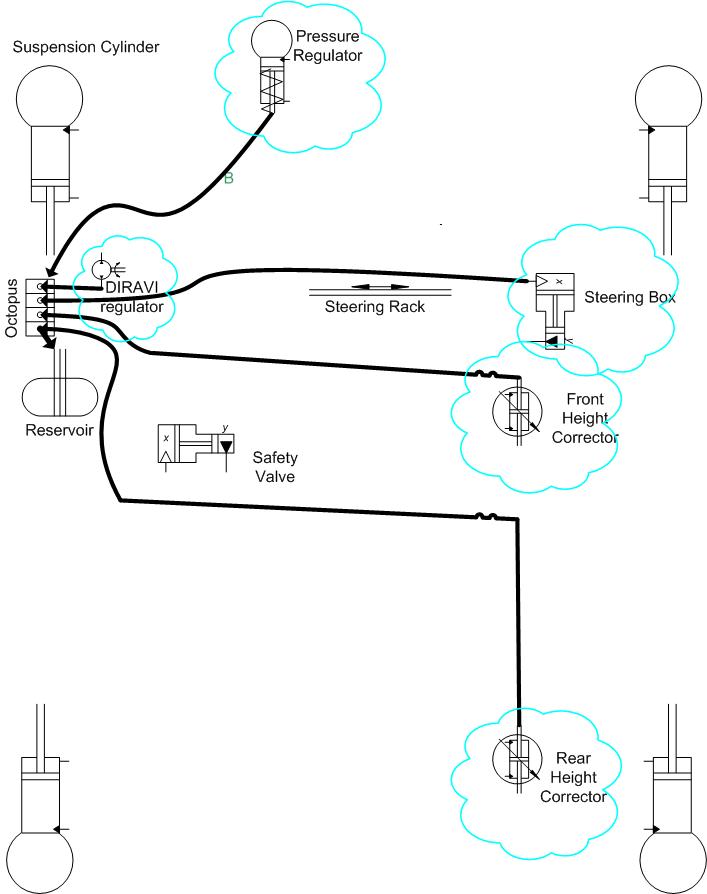 |
| |
| Most of the return lines are aggregated at 'the octopus' |
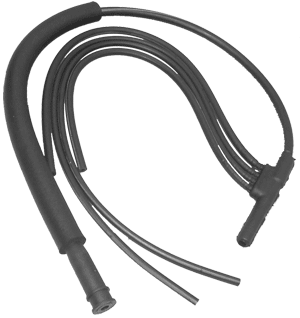 |
| Well, perhaps an octopus after the sushi chef got to
it. This octopus only has five legs. The largest hose connects to the pressure regulator.
Once the system has been brought up to pressure, the pressure
regulator directs the pump's output back through this large tube.
The other four tubes receive high-volume LHM from the DIRAVI steering
regulator, the steering box itself, and the front and rear height
correctors.
The straight tube next to the junction of the four small tubes
connects directly to the reservoir. |
 |
| |
| One of the lines takes excess LHM from the DIRAVI
regulator. Two of the octopus lines connect to the front and
rear height correctors. They receive the LHM discharged from the
cylinders when the suspension is lowered. The connection for
these discharge lines are under the car, near the safety valve.
I was not able to reach far enough down to properly clamp these lines,
so I flagged them with red cloth. |
| |
| |
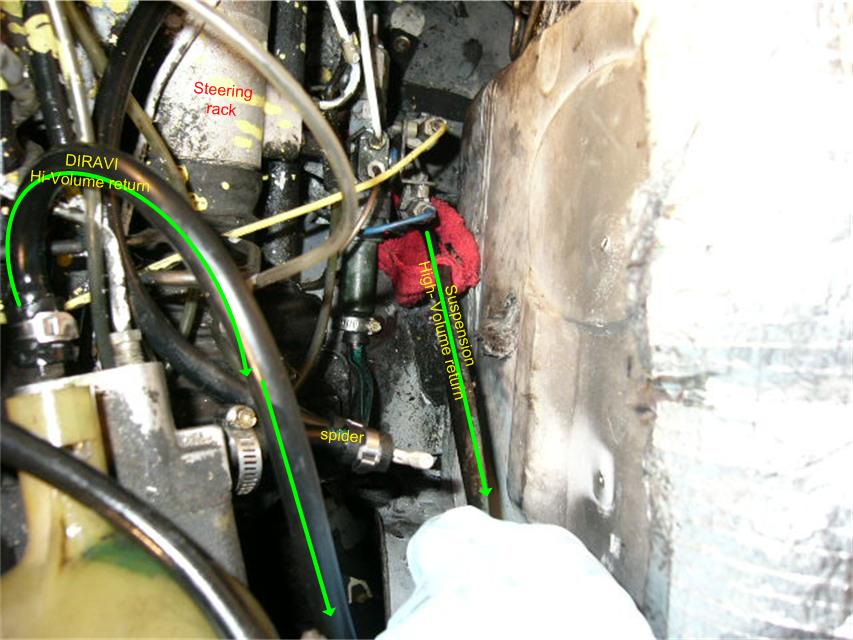 |
| Here is the connection at the steering box for the
high-volume line. I used fuel injection hose and two
clamps. Not enough room for the Ligarex tool. Ligarex is
elegant in its simplicity, but you need some room around the hose to
tighten the ligatures. |
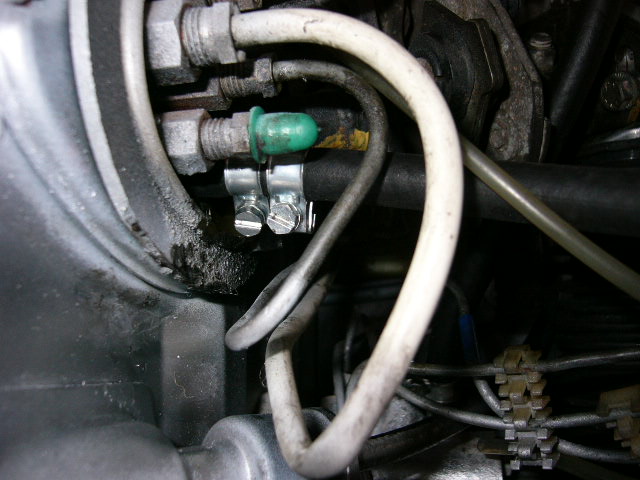 |
| For the right hand drive models, Citroen did not
fabricate a special octopus with longer lines for the steering box.
They simply spliced a hose from the steering box to the same octopus
that was fit to left hand drive cars. I did the same.
Ligarex, of course. |
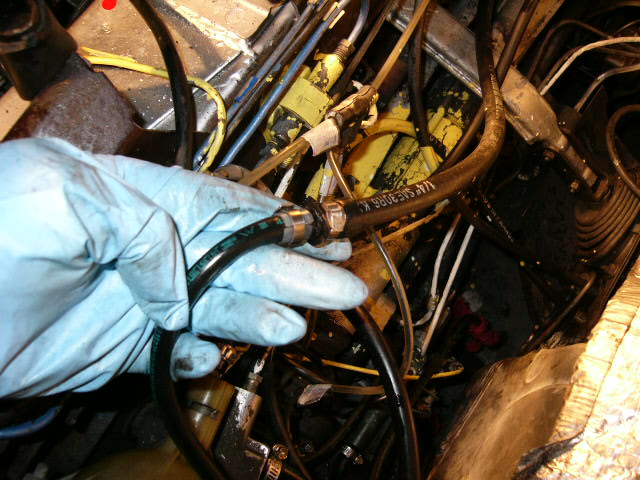 |
| In this image I have noted the path of the line from
the steering box to the splice with the octopus hose. |
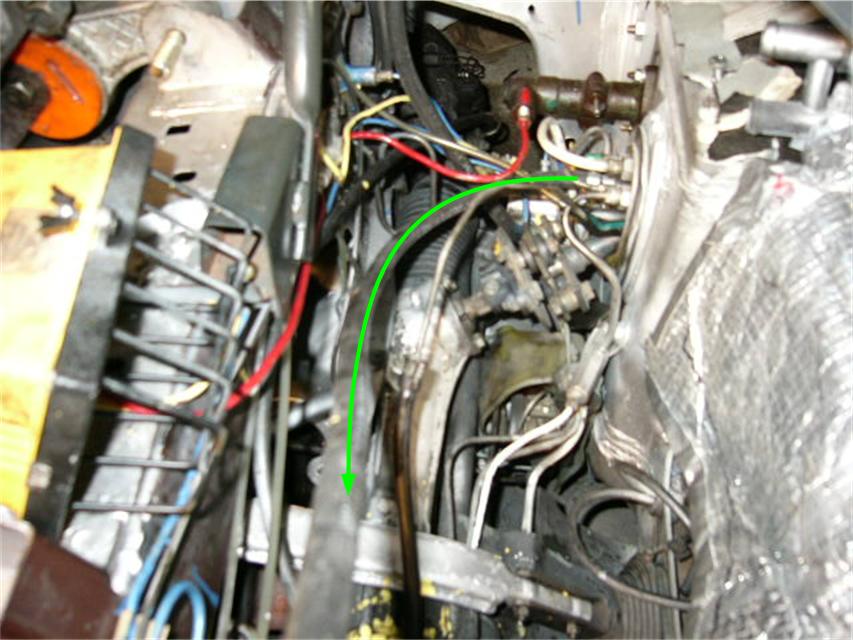 |